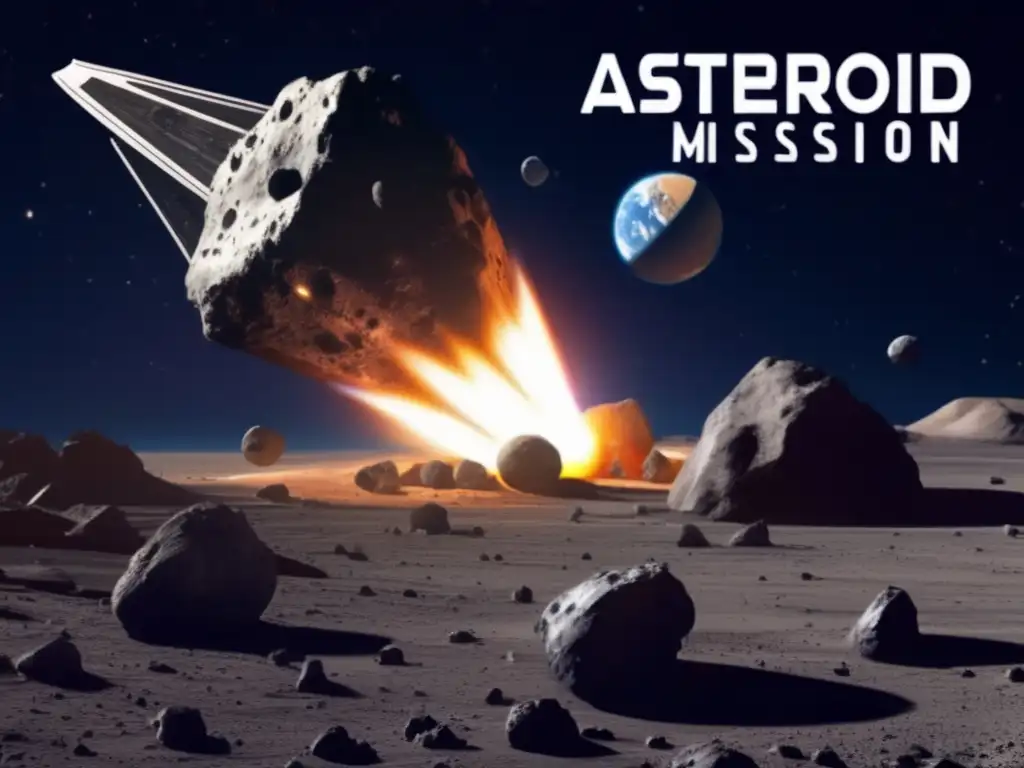Planetary Protectors: The Science Of Asteroid Defense

Introduction
Asteroids are considered to be one of the most significant threats to our planet. These celestial bodies can cause massive destruction and damage to Earth and its inhabitants. The importance of asteroid defense cannot be underestimated, and it has become a crucial area of research in the field of astronomy. In this article, we will explore the science behind asteroid defense and the various strategies used to detect and deflect these potential threats.
The Threat of Asteroids

What is an asteroid?
An asteroid is a small rocky object that orbits the sun. Most asteroids are found between the orbits of Mars and Jupiter in the asteroid belt. However, some asteroids have eccentric orbits that can bring them close to Earth. These asteroids can vary in size from a few meters to several kilometers in diameter. A collision with a large asteroid can cause global devastation and mass extinction events.
How often do asteroids hit Earth?
Large asteroids strike Earth very infrequently, but the consequences of such an impact can be catastrophic. The last major asteroid impact occurred approximately 65 million years ago, which is believed to have caused the extinction of the dinosaurs. Smaller asteroids collide with Earth more frequently, but they tend to burn up in the atmosphere before reaching the surface.
Why is it important to defend against asteroids?
The threat of a large asteroid impact is real, and it could have devastating consequences for life on Earth. Even smaller asteroids can cause considerable damage and loss of life. Therefore, it is essential to have a plan in place to protect our planet from these potential threats.
Asteroid Detection

How do we detect asteroids?
The detection of asteroids is essential for planetary defense. The most common method of detecting asteroids is through ground-based telescopes. These telescopes can observe the night sky and detect moving objects that could be asteroids. Additionally, space-based telescopes can detect asteroids that are closer to Earth and harder to see from the ground.
What is the role of radar in asteroid detection?
Radar is an essential tool in asteroid detection as it can provide valuable information about an asteroid's size, shape, and trajectory. Radar can also detect objects that may be missed by ground-based telescopes and help refine the path of asteroids that have already been detected.
What is the importance of early detection?
Early detection of asteroid threats is critical for effective defense. The earlier we detect an asteroid, the more time we have to take action to deflect it. Therefore, ongoing monitoring and detection of near-Earth asteroids are essential to ensure that we can respond adequately to any potential threat.
Asteroid Deflection Strategies

What is the goal of asteroid deflection?
The primary goal of asteroid deflection is to change the trajectory of an asteroid to prevent it from colliding with Earth. There are several strategies that scientists are currently investigating to achieve this goal.
What are kinetic impactors?
Kinetic impactors are one of the most straightforward deflection strategies. The concept involves impacting an asteroid with a spacecraft to change its trajectory. This approach is currently being tested through the Double Asteroid Redirection Test (DART) mission, which aims to deflect the asteroid Didymos in 2022.
What is gravity tractor technology?
Gravity tractors involve using the gravitational force of a spacecraft to alter the trajectory of an asteroid. This approach requires a spacecraft to remain close to the asteroid for an extended period, allowing the gravitational force to gradually change its path. NASA's Near-Earth Object Camera (NEOCam) mission is currently exploring the potential of this technology.
What is the use of nuclear explosives in asteroid defense?
The use of nuclear explosives is a controversial but potentially effective method of asteroid deflection. This approach involves detonating a nuclear device near an asteroid, causing it to change course due to the explosion's force. However, the use of nuclear devices in space would require careful consideration, and there are concerns regarding the environmental impact of such an approach.
Frequently Asked Questions

-
Can we destroy an asteroid?
While we may be able to destroy small asteroids, it is unlikely that we could destroy a large asteroid. Our primary goal is to change the asteroid's trajectory and ensure that it does not collide with Earth.
-
How much warning would we have before an asteroid collision?
The amount of warning we would receive depends on the size and trajectory of the asteroid. Small asteroids may only give us a few days' notice, while larger asteroids could be detected years in advance.
-
Can we detect all near-Earth asteroids?
No, we cannot detect all near-Earth asteroids. However, ongoing monitoring and detection efforts are improving our ability to identify potential asteroid threats.
-
What is the likelihood of a large asteroid impact?
The likelihood of a large asteroid impact is low, but the consequences of such an event could be catastrophic. Therefore, it is essential that we take asteroid defense seriously and plan accordingly.
-
Who is responsible for asteroid defense?
Asteroid defense is a collaborative effort between government agencies, private organizations, and scientific institutions. NASA leads the efforts in the United States, while other countries have their own asteroid defense programs.
Conclusion
Asteroid defense is a crucial area of research and development, given the potential impact of an asteroid collision on Earth. Scientists are investigating various techniques to detect and deflect asteroids, and ongoing monitoring and detection efforts are vital to protecting our planet. By working together and investing in asteroid defense technologies, we can ensure that we are prepared to respond to any potential threat.
Thank you for reading this article. We encourage you to share your thoughts and ideas in the comments section. Don't forget to subscribe to www.asteroidrealm.com for more exciting asteroid-related content.
Additional Resources

For more information on asteroid defense, visit these resources:
- NASA Planetary Defense
- European Space Agency Near-Earth Objects
- NASA Center for Near Earth Object Studies
 Deflecting The Space Threat: Techniques For Asteroid Defense
Deflecting The Space Threat: Techniques For Asteroid Defense Our Planetary Bodyguards: Strategies For Asteroid Defense
Our Planetary Bodyguards: Strategies For Asteroid Defense Standing Guard In The Cosmos: Tools For Asteroid Defense
Standing Guard In The Cosmos: Tools For Asteroid DefenseIf you want to discover more articles similar to Planetary Protectors: The Science Of Asteroid Defense, you can visit the Planetary Defense category.
Leave a Reply

Articulos relacionados: